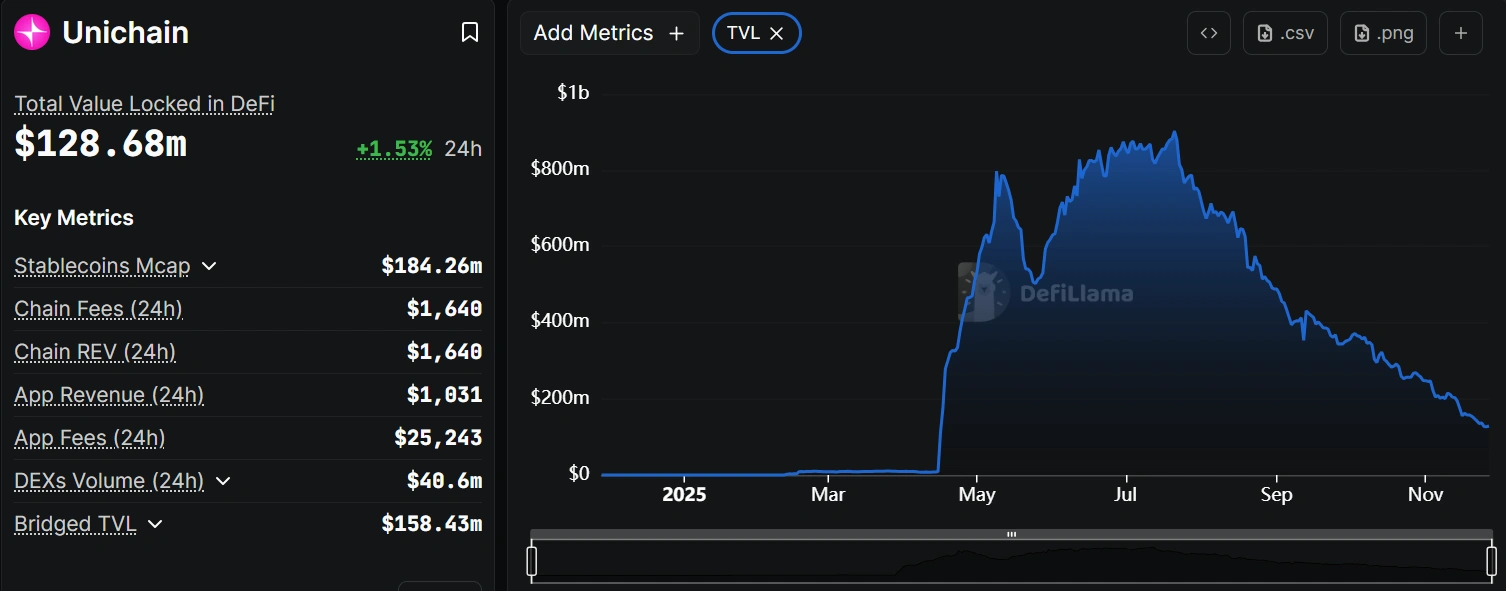Unichain’s TVL has declined by 86% from its all-time high following the end of its incentive program, leaving the network vulnerable without a strong competitive edge to retain liquidity providers. This drop highlights broader challenges in Layer 2 ecosystems reliant on temporary rewards.
-
Unichain’s incentive campaign distributed 3.5 million UNI tokens, boosting TVL temporarily before a sharp reversal.
-
Similar declines seen in networks like Linea (83%) and Berachain (91%), tied to ending rewards and market pressures.
-
Experts stress the need for sustainable yields and diverse applications to maintain TVL beyond incentives, with data from DefiLlama showing Unichain’s current TVL far below peaks.
Unichain TVL decline: Explore the 86% drop after incentives end, impacts on Layer 2 blockchains, and strategies for recovery. Stay informed on crypto trends—read now for key insights into sustainable DeFi growth.
What Caused Unichain’s TVL Decline?
Unichain’s TVL decline stems primarily from the termination of its $21 million incentive program, which had artificially inflated liquidity through UNI token distributions. Launched in April 2025 and managed by Gauntlet, the campaign distributed about 3.5 million UNI tokens, driving a surge in total value locked. However, once incentives ended, liquidity providers shifted assets to higher-yield opportunities elsewhere, resulting in an 86% drop from the all-time high, as reported by DefiLlama.
Why Are Temporary Incentives Failing Layer 2 Networks?
Layer 2 networks like Unichain face significant hurdles when relying on short-term incentives, as these programs often create unsustainable liquidity bubbles. Tom Wan, head of data at Entropy Advisors, highlighted this issue in a DefiLlama analysis, noting that Unichain’s decline mirrors broader trends, with Linea experiencing an 83% TVL drop and Berachain a 91% plunge from their peaks. Erick Pinos, Head of Ecosystem at Nibiru Chain, emphasized that “incentives are very tricky to get correct,” underscoring the difficulty in balancing rewards to foster genuine adoption rather than speculative farming.
Wan responded by praising adaptive designs, such as Entropy Advisors’ DRIP program on Arbitrum, which adjusts based on market dynamics and protocol performance to promote longevity. An observer posting as Soleil on X pointed out that “killer apps and sustainable yields are the only two elements that can keep TVLs,” arguing Unichain’s main attraction—its tie to Uniswap—lacks a sufficient moat against competing DeFi protocols offering better returns post-incentives.
Eliezer Ndinga, global head of research and founding venture partner at 21shares, added that the crypto space grapples with a product-market fit problem without incentives, which have become mere entry requirements. Drawing parallels to Web 2 bootstrapping, Ndinga suggested protocols must learn from established growth models to build enduring ecosystems. Data from DefiLlama confirms this pattern: Unichain’s TVL, once buoyed by the campaign, has evaporated substantially, leaving the network to rely on its technical merits like fast finality and low fees.
Despite these strengths, converting transient participants into committed users remains a core challenge. Established Layer 2s with diverse dApps have fared better, while Unichain’s focus on Uniswap integration has not yet diversified enough to retain capital amid shifting opportunities.
 Unichain TVL is down close to 90% from its all-time high. Source: DefiLlama
Unichain TVL is down close to 90% from its all-time high. Source: DefiLlamaThe broader market context exacerbates these issues. A recent bearish phase saw Bitcoin dip near $80,000, impacting Layer 1 and Layer 2 chains alike. Although Bitcoin has rebounded above $91,000, recovery for affected networks like Berachain—which suffered a 91.7% TVL decline to $273.67 million after an exploit—could be protracted. Linea shows minor signs of stabilization, with its drop easing to about 78.9%, but overall, the sector grapples with incentive fatigue and economic volatility.
Frequently Asked Questions
What Caused the 86% Drop in Unichain TVL After Incentives?
The 86% Unichain TVL decline followed the end of a $21 million incentive program in April 2025, which distributed 3.5 million UNI tokens via Gauntlet. Liquidity providers, attracted by rewards, withdrew funds to pursue higher yields elsewhere once the program concluded, as tracked by DefiLlama data.
How Does the Unichain TVL Decline Compare to Other Layer 2 Networks?
Unichain’s 86% TVL drop aligns with challenges in other Layer 2s, like Linea’s 78.9% decline and Berachain’s 91.7% fall to $273.67 million. These reductions tie to ended incentives and market downturns, with Bitcoin’s recent volatility amplifying liquidity shifts across ecosystems.
Key Takeaways
- Incentive Dependency Risks: Programs like Unichain’s can spike TVL temporarily but lead to sharp declines without sustainable alternatives, as seen in the 86% drop post-campaign.
- Broad Market Impact: Similar TVL crashes in Linea and Berachain highlight systemic issues in Layer 2s, worsened by bear markets and exploits, per DefiLlama metrics.
- Path to Recovery: Networks must prioritize diverse apps and adaptive yields, like Entropy Advisors’ DRIP model, to convert reward farmers into long-term users.
Conclusion
Unichain’s TVL decline of 86% underscores the pitfalls of incentive-driven growth in Layer 2 blockchains, where ending rewards exposes vulnerabilities without a robust moat or diverse ecosystem. As experts like Tom Wan and Erick Pinos note, sustainable yields and killer applications are essential for retention amid competitive DeFi landscapes. With Bitcoin’s rebound signaling potential market stabilization, Unichain and peers must innovate to rebuild liquidity—developers and investors should monitor technical upgrades for signs of genuine adoption and long-term viability.
